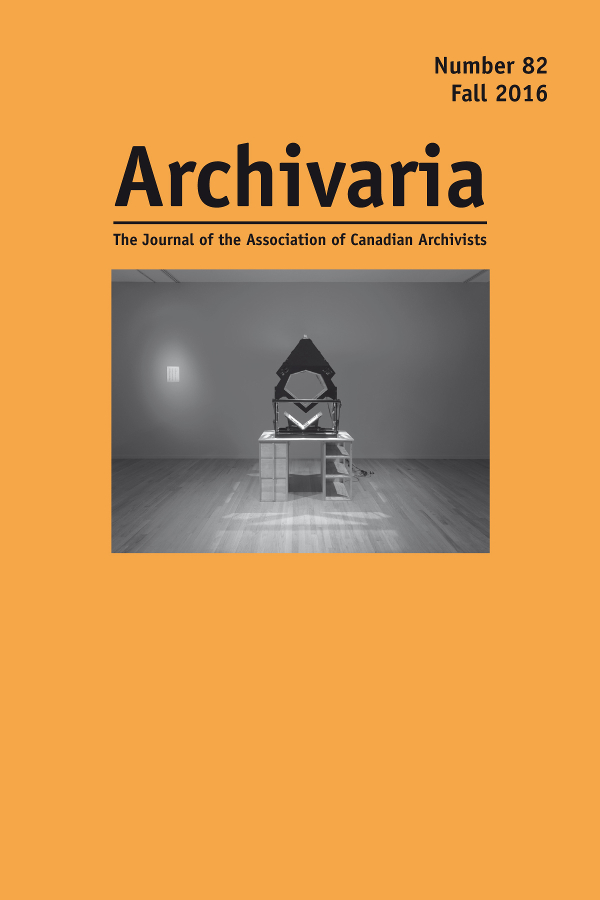Catalogues and the Collecting and Ordering of Knowledge (I): ca. 1550–1750
Résumé
This is the first of a two-part article exploring the role played by catalogues in collecting and ordering knowledge within the nascent cultures of libraries, museums, and archives. The present article focuses on the emergence and growth of library, museum, and archival catalogues in western Europe between the second half of the 16th century and the first half of the 18th century, with a view to elucidating some of the ways in which they reflected and embodied broader transformations taking place during that time in various systems and institutions of knowledge. In the early modern period, the collecting and ordering of books, artifacts, and documents by libraries, museums, and archives were motivated, in part, by the fear that critical sources of knowledge might disappear, either through violence or neglect. Libraries, museums, and archives were positioned, increasingly, as safe havens for these sources of knowledge as well as sites for the production of new knowledge. Catalogues played a significant role in this positioning by ordering the collected sources of knowledge and making them known (in varying degrees) to a growing community of users. Between 1550 and 1750, the organizing principles underpinning these catalogues were shaped and reshaped in response to shifting currents of thinking about the organization of scholarly, scientific, and political knowledge. The article traces the distinctive ways in which library, museum, and archival catalogues reflected and embodied those shifts.
RÉSUMÉ
Cet article est la première de deux parties d’une étude qui explore le rôle qu’ont joué les catalogues dans la collection et l’organisation du savoir dans les cultures naissantes des bibliothèques, des musées et des archives. Le présent article se concentre sur l’émergence et l’épanouissement des catalogues de bibliothèques, de musées et de centres d’archives en Europe de l’Ouest entre la seconde moitié du XVIe siècle et la première moitié du XVIIIe siècle, dans le but d’élucider certaines des manières dont ils ont reflété et incarné les transformations plus larges qui se manifestaient à cette époque dans les divers systèmes et institutions du savoir. Aux débuts de la période moderne, la collection et l’organisation de livres, d’artefacts et de documents par les bibliothèques, les musées et les archives étaient motivées, en partie, par la crainte que les sources essentielles du savoir pourraient disparaître à cause de la violence ou de la négligence. Les bibliothèques, les musées et les centres d’archives étaient de plus en plus en position d’être des lieux sûrs pour ces sources du savoir, ainsi que des lieux pour la production de nouveau savoir. Les catalogues ont joué un rôle important dans ce positionnement en organisant les sources réunies de savoir et en les rendant disponibles (à des degrés divers) à une communauté grandissante d’utilisateurs. Entre 1550 et 1750, les principes d’organisation sous-jacents de ces catalogues ont été façonnés et refaçonnés pour répondre aux changements des courants de pensées concernant l’organisation du savoir érudit, scientifique et politique. Cet article retrace les façons distinctives dont les catalogues de bibliothèque, de musées et de centres d’archives reflétèrent et incarnèrent ces changements.
Authors of manuscripts accepted for publication retain copyright in their work. They are required to sign the Agreement on Authors' Rights and Responsibilities that permits Archivaria to publish and disseminate the work in print and electronically. In the same agreement, authors are required to confirm that "the material submitted for publication in Archivaria, both in its paper and electronic versions, including reproductions of other works (e.g. photographs, maps, etc.) does not infringe upon any existing copyright." Authors of manuscripts accepted for publication retain copyright in their work and are able to publish their articles in institutional repositories or elsewhere as long as the piece is posted after its original appearance on archivaria.ca. Any reproduction within one year following the date of this agreement requires the permission of the General Editor.





